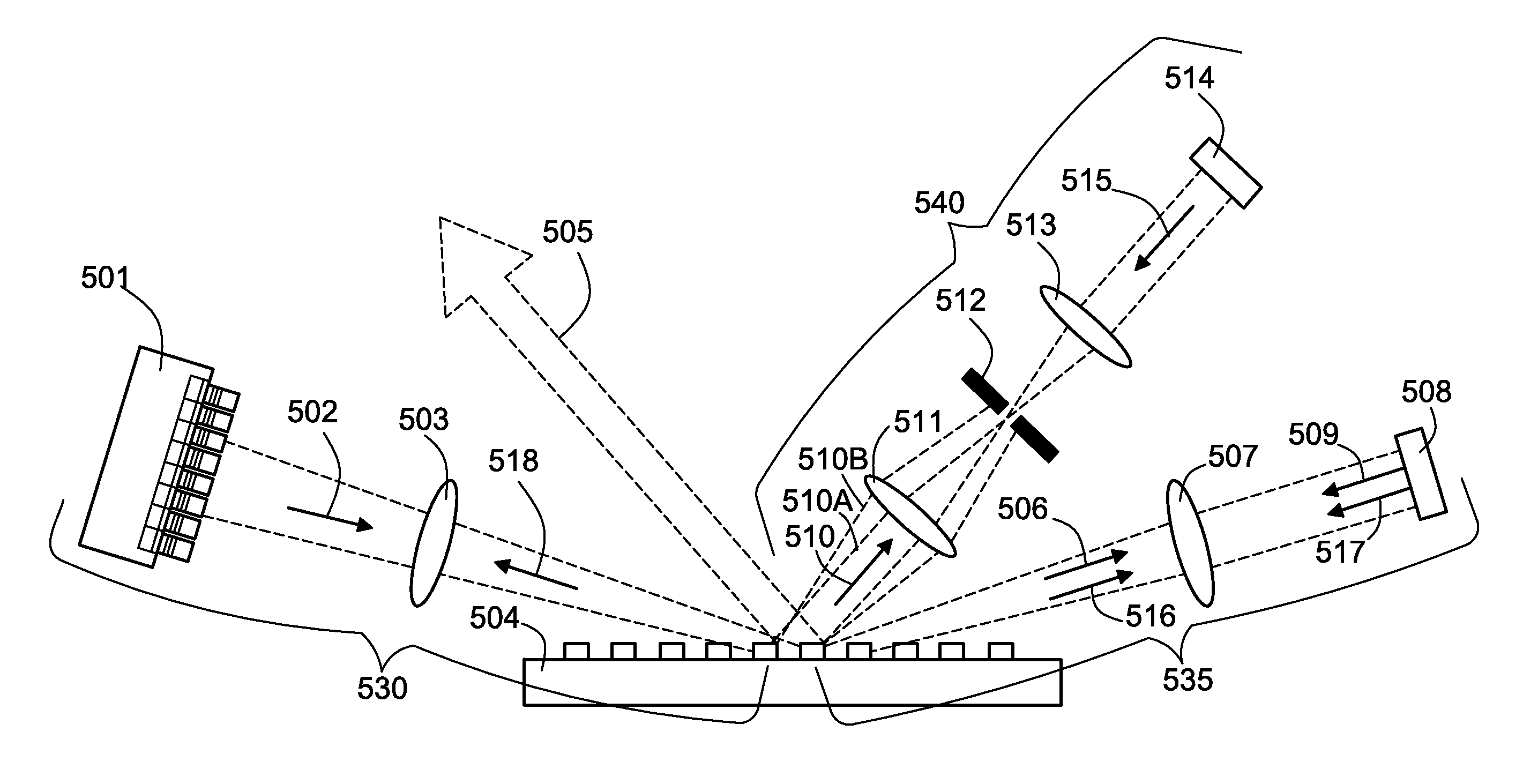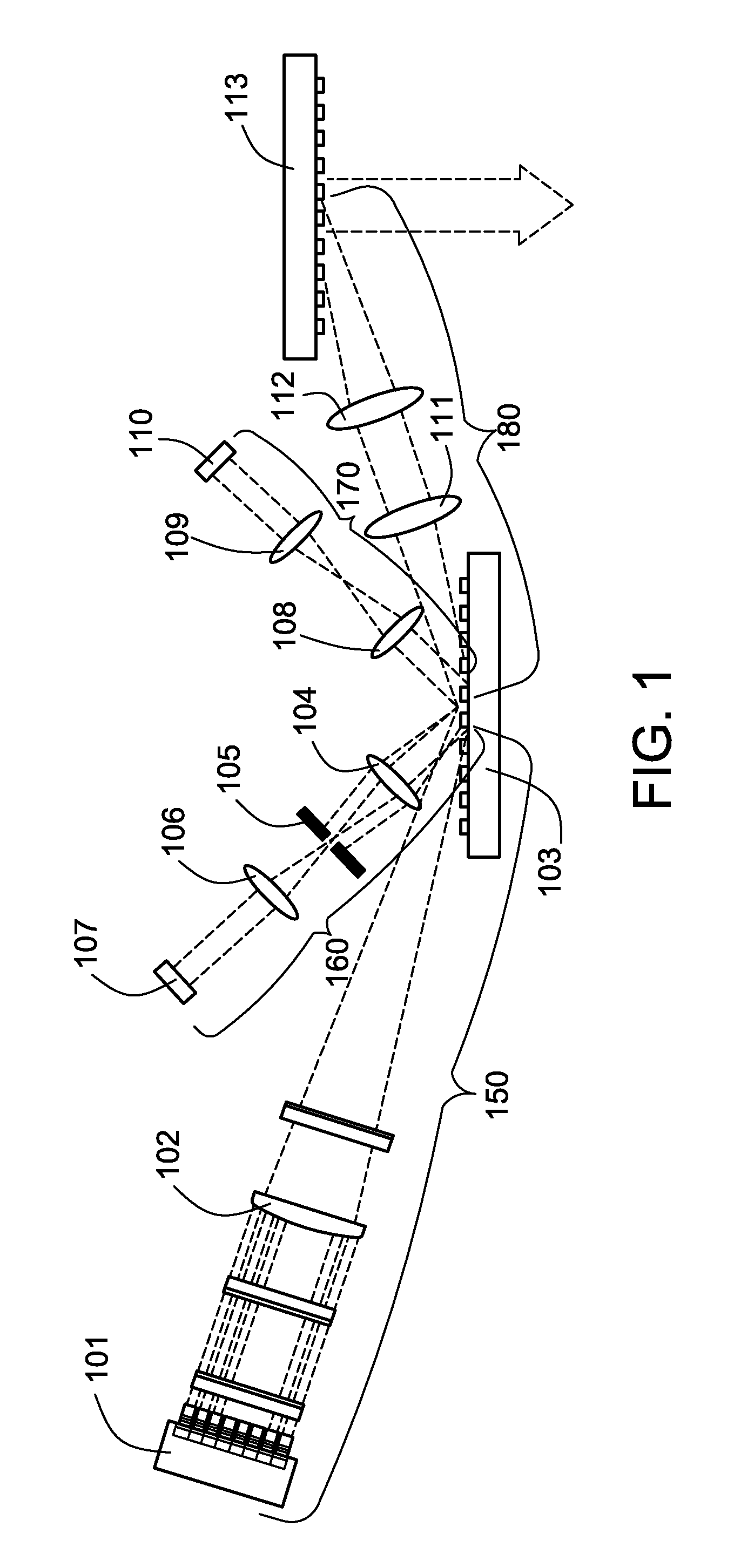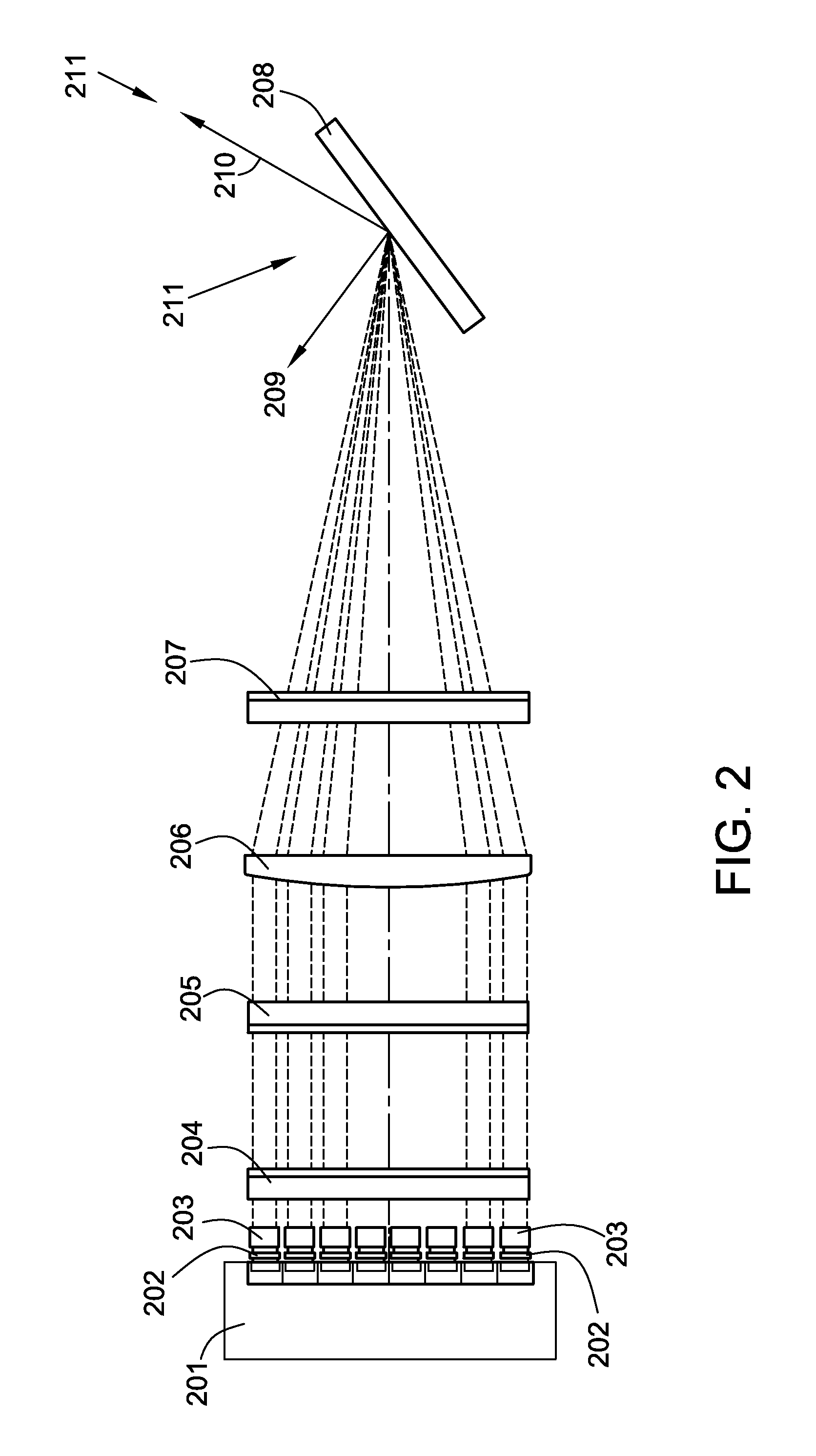High brightness dense wavelength multiplexing laser
a wavelength and wavelength dense technology, applied in lasers, laser construction details, transmission, etc., can solve the problems of reducing beam quality, and reducing beam quality, so as to reduce the wall-plug efficiency loss, the effect of reducing the wall-plug efficiency of the system
- Summary
- Abstract
- Description
- Claims
- Application Information
AI Technical Summary
Benefits of technology
Problems solved by technology
Method used
Image
Examples
Embodiment Construction
[0025]FIG. 1 illustrates an apparatus for producing a single, multi-wavelength output laser beam comprising a plurality of spatially and directionally overlapped single wavelength beams. The apparatus depicted in FIG. 1 utilizes a reflection diffraction element to couple a plurality of single wavelength beams, each of which is emitted by an individual emitter in a beam emitter array. The apparatus depicted in FIG. 1 includes a laser source 101 and an output combining element 113. The laser source 101 includes a plurality of laser emitters. In various implementations, the laser source 101 may be a one dimensional array of diode laser emitters, a two dimensional array of diode laser emitters, or a one of a variety of additional configurations of laser emitters. The apparatus depicted in FIG. 1 further includes four optical path arms: an emitter array transformation arm 150, a first feedback branch arm 160, a second feedback branch arm 170, and an output arm 180. The emitter array tran...
PUM
 Login to View More
Login to View More Abstract
Description
Claims
Application Information
 Login to View More
Login to View More - R&D
- Intellectual Property
- Life Sciences
- Materials
- Tech Scout
- Unparalleled Data Quality
- Higher Quality Content
- 60% Fewer Hallucinations
Browse by: Latest US Patents, China's latest patents, Technical Efficacy Thesaurus, Application Domain, Technology Topic, Popular Technical Reports.
© 2025 PatSnap. All rights reserved.Legal|Privacy policy|Modern Slavery Act Transparency Statement|Sitemap|About US| Contact US: help@patsnap.com



